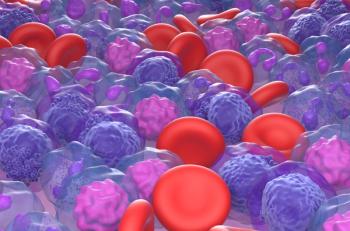
Postsurgery Factors Linked With Disease Control in Chronic Rhinosinusitis With Nasal Polyps
Patients with chronic rhinosinusitis with nasal polyps who had elevated serum amyloid A (SAA) levels were more likely to achieve disease-controlled status vs those with low SAA levels after endoscopic sinus surgery.
Patients with chronic rhinosinusitis with
As over 30% of patients with CRSwNP have uncontrolled disease despite the presence of standard-of-care treatment, researchers noted that adverse outcomes may be associated with an underlying variation of endotypes resulting in a discrepancy of clinical phenotype and disease prognosis.
In findings of a previous analysis by the study authors, they showed SAA levels in polyp tissues could serve as a biomarker for the prediction of corticosteroid insensitivity in patients with CRSwNP.
“Since it has been well recognized that corticosteroid responsiveness is closely related to the degree of eosinophilic inflammation, whereas eosinophilic inflammation is a major phenotype associated with poorly controlled disease and polyp recurrence in patients with CRSwNP, this led us to hypothesize that SAA might be used as a potential biomarker for predicting treatment outcome in patients with CRSwNP after ESS,” researchers noted.
Data from polyp tissues and control uncinate process mucosa from 10 healthy controls and 48 patients with CRSwNP who underwent ESS were compiled from the electronic medical database of the First Affiliated Hospital of Sun Yat-sen University in Guangzhou, China, between January 2015 and December 2016.
Eosinophilic CRSwNP (ECRSwNP) was diagnosed when the percentage of tissue eosinophils exceeded 10% of the total inflammatory cells. Patients with CRSwNP were subdivided into SAAhigh and SAAlow subgroups according to the SAA cut-off value of 114.9 ng/mL in polyp tissues.
In the analysis, SAA expression was examined using immunohistochemistry and enzyme-linked immunosorbent assay, with receiver operating characteristic (ROC) curves performed to determine the predictive value of SAA in nasal polyps.
A total of 26 patients and 22 patients were placed in the SAAlow and SAAhigh CRSwNP groups, respectively. Age, gender, and smoking status were matched between the study groups.
After ESS, patients with ECRSwNP had significantly higher preoperative
In their findings, patients with CRSwNP who achieved disease-control showed significantly higher SAA tissue levels than those of partly controlled and uncontrolled counterparts. Moreover, patients of the SAAhigh subgroup showed higher tissue eosinophil numbers and a greater percentage of disease-controlled status compared with the SAAlow subgroup.
After setting the cut-off value at 114.9 ng/mL for the tissue SAA level, ROC curve analysis predicted the patients with disease-controlled status with 93.33% sensitivity and 63.64% specificity (area under the curve [AUC] = .8727; P < .001).
“Our findings suggest that measurements of SAA in polyp tissues may provide useful information for evaluating CRSwNP conditions, especially identifying the CRSwNP patients with disease-controlled status after ESS,” concluded the study authors.
Reference
Lu H, Liu H, Wang K, Shi J, Sun Y. Association between serum amyloid A expression and disease control after endoscopic sinus surgery in patients with chronic rhinosinusitis with nasal polyps. Ear Nose Throat J. Published online November 23, 2021. doi:10.1177/01455613211051311
Newsletter
Stay ahead of policy, cost, and value—subscribe to AJMC for expert insights at the intersection of clinical care and health economics.













































